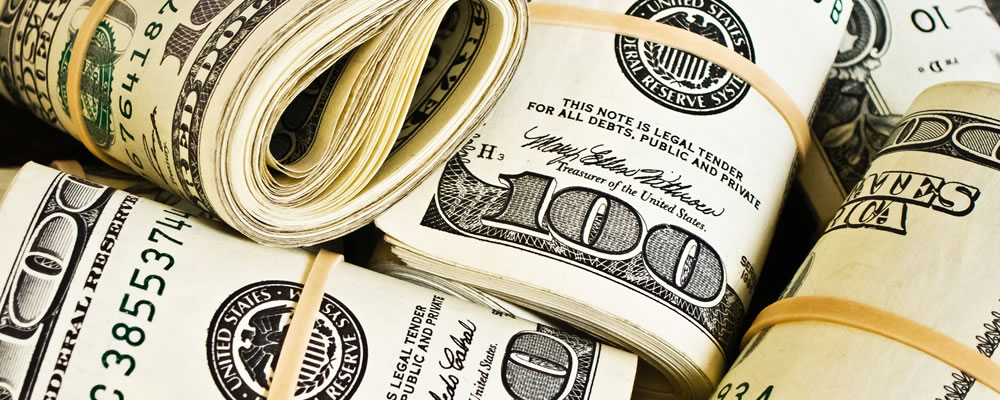Euro US Dollar (EUR/USD) Exchange Rate Falls as Industrial Production Slumps to Lowest Level Since 1940s
UPDATE: The Euro US Dollar (EUR/USD) exchange rate slumped further on Wednesday afternoon. This left the pairing trading -0.7% lower at $1.0904.
Risk appetite slumped further this afternoon following the release of US retail sales figures.
Sales slumped by -8.7% in March, the largest decline since the government began tracking this data in 1992.
US retail sales plummeted last month due to mandatory business closures and ‘stay-at-home’ orders that are affecting around 90% of Americans. This added to signs the US economy is in a deep recession.
Meanwhile, further data from the United States showed that industrial production tumbled to its lowest level since 1946.
Output plummeted by -5.4% in March, as the coronavirus pandemic hit mines, utility companies and factories.
Euro US Dollar (EUR/USD) Exchange Rate Slides as IMF Predicts Worst Recession Since 1930s
The Euro US Dollar (EUR/USD) exchange rate slumped on Wednesday, as the risk-off mood grasped markets. This left the pairing trading -0.7% lower at $1.0909.
The US Dollar erased losses from earlier in this week’s session. Growing concerns about the global economy sparked a risk-off mood amongst investors boosting USD.
Concerns that the damage to the global economy will be larger and more drawn out than expected has caused traders to flock to the safety of the Dollar.
Analysts have warned that it remains unclear whether or not economies will recover quickly.
Commenting on this, head of FX strategy at Commerzbank in Frankfurt, Ulrich Leuchtmann noted:
‘That means the worst might yet be to come, facing the market with an ice bucket challenge. In that case risk aversion would rise, allowing the Dollar to appreciate again.’
Added to this, the warnings from the International Monetary Fund (IMF) weighed on risk appetite. The IMF predicts the global economy will shrink by around 3% in 2020.
This would mark the longest downturn since the Great Depression in the 1930s, and in its report the IMF stated:
‘It is very likely that this year the global economy will experience its worst recession since the Great Depression, surpassing that seen during the global financial crisis a decade ago.
‘The Great Lockdown, as one might call it, is projected to shrink global growth dramatically.’
Euro (EUR) Falls as Bloc Discusses Easing of Coronavirus Restrictions
Meanwhile, the single currency edged lower against its main rival as European Commission chief, Ursula von der Leyen is expected to lay out a roadmap for lifting Covid-19 restrictions across the bloc.
Added to this, uncertainty about the global economic impact offset reports that German Chancellor Angela Merkel is set to discuss easing restrictions with Germany’s 16 state premiers.
The German Chancellor is expected to discuss this with states. This includes the most populous North Rhine-Westphalia which is already planning to return after the country’s Easter break.
However, this did little to boost the Euro as the increased uncertainty sent traders flocking back to the ‘Greenback’.
Euro US Dollar Outlook: US Jobless Data in Focus
Looking ahead to Thursday, the Euro (EUR) could suffer further losses against the US Dollar (USD) following the release of Eurozone industrial production data.
If industrial production slumps in February, after the bloc saw a rebound in January, the single currency will slide.
Traders are going to be focused on further US jobless data which is expected to show another huge increase in the number of Americans claiming unemployment.
If initial jobless claims jump once again by more than expected in the week ending the 11 April, the Euro US Dollar (EUR/USD) exchange rate will slump as risk appetite continues to fall.



